As a follow-on from the previous post about the Port of Drummochie, and the heyday of the salt pans there, we can look in more detail at the visible evidence of the old structures around this area. First, for context, a map comparison (above) of Drummochy in 1964 (top) and a feuing plan of the same area from around 1840. Numbered on both maps are:
1. The site of the former Emsdorf School;
2. The Salt Panhouse on the 'Panbraes';
3. Drum Lodge;
4. Salt Girnel (later known as Net House).
These landmarks and others are also annotated on the map below of Drummochy Salt Works from the book 'Largo - An Illustrated History' by Eric Eunson and John Band. This also shows how the pair of skerries of rock directly in front of the panhouse would likely have been dammed to create a 'bucket pot' (basin). Here the sea water would have been held when the tide was out, ready to be drawn up into the panhouse for boiling. More about the salt production process can be read about here.
Another historic feature in this vicinity is the man-made extension to the end of the Lundie rocks. Built around the 1830s, in the pre-railway days of the steam boat services, this low-water pier allowed boats to dock, embark and disembark passengers and goods, whatever the state of the tide. The flat platform of cut rocks can still be seen at the Lundies southern tip. The two images above show this from the ground and below is the same area from above. Remnants of iron fixings in the rock indicate a walkway with a bannister once would have assisted passengers from the boat to the shore.
Enjoy a short drone video clip ending at the former Drummochy Harbour here: https://youtu.be/HzIW_B2jxbk







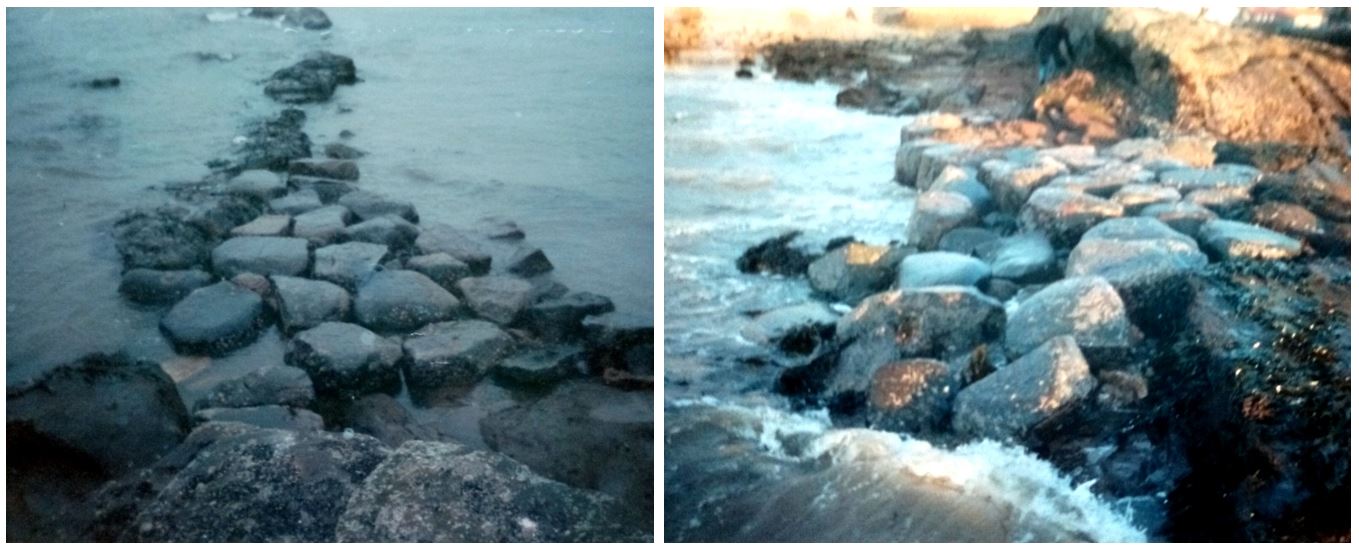

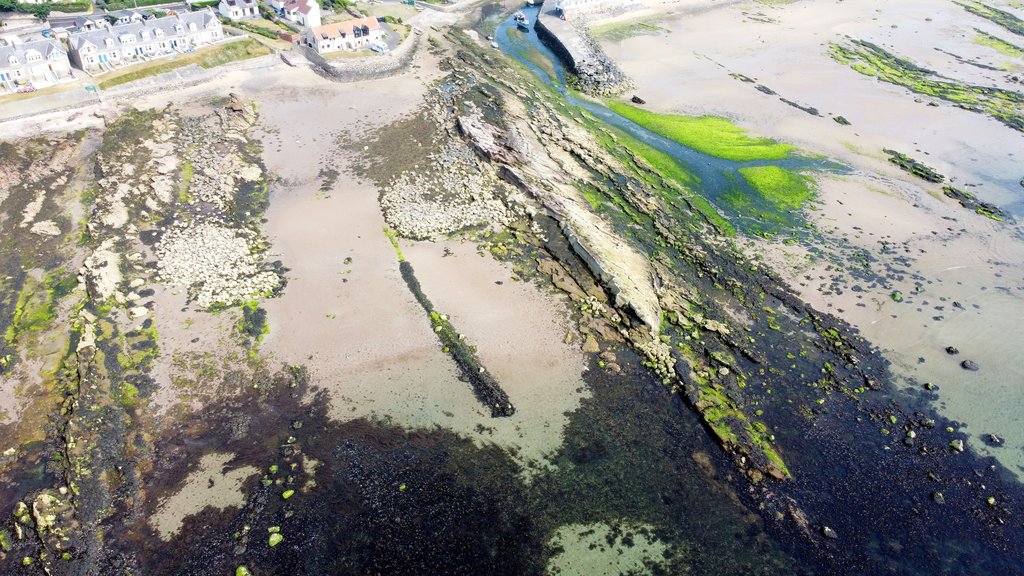


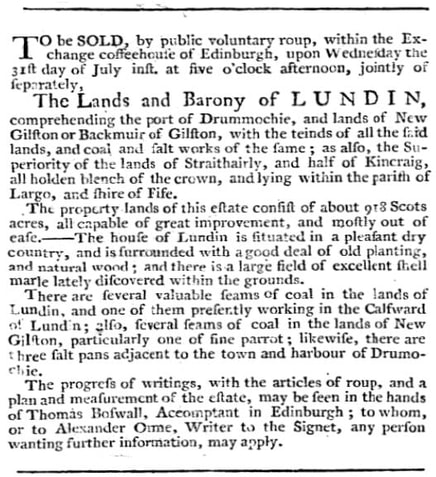






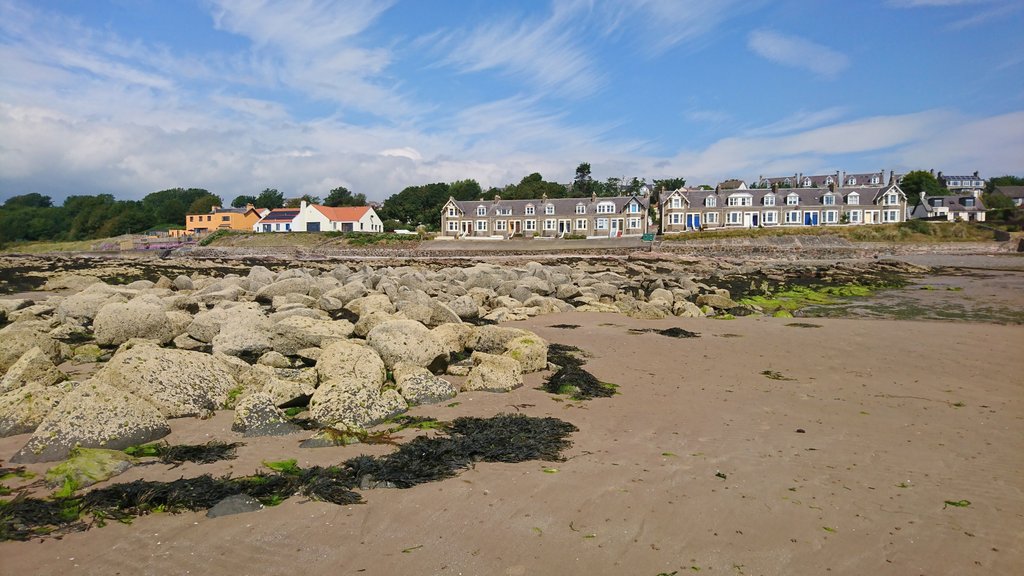









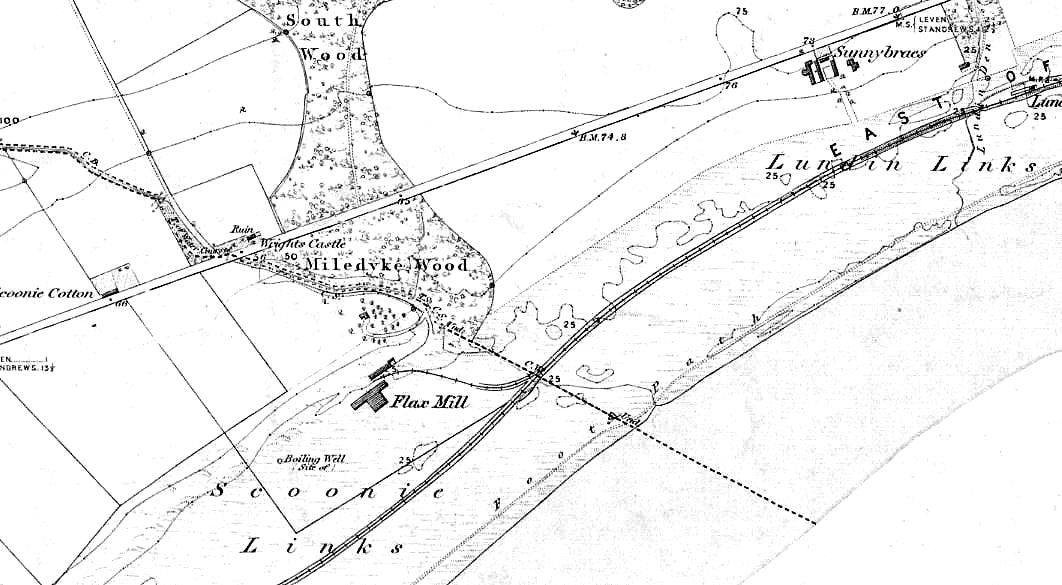





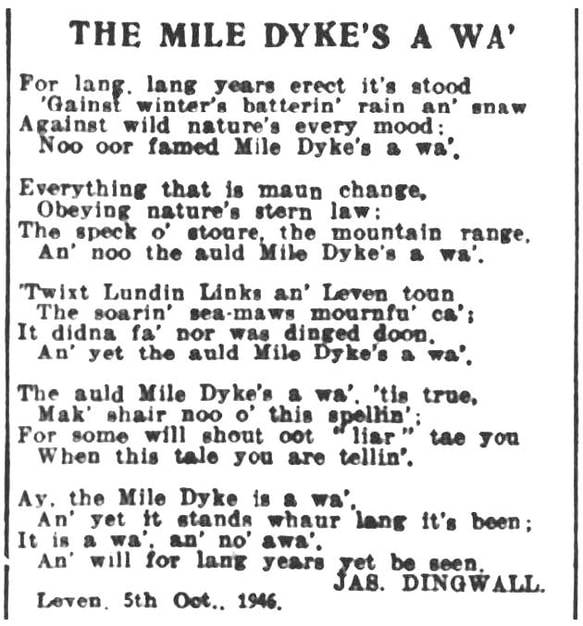
 RSS Feed
RSS Feed
